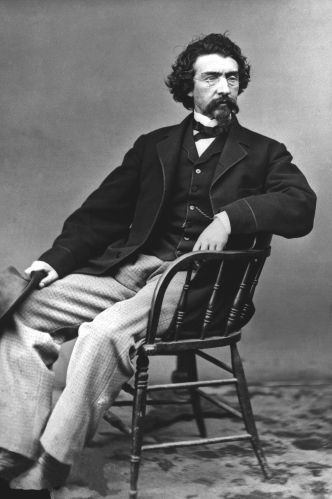Mathew Brady was born in Warren County, New York,
the son of Irish immigrant farmers. Aspiring to a career as a
painter, he moved around 1839 to Saratoga, New York, to study
with William Page, a prominent American portrait artist. Brady
is thought to have learned about the daguerreotype, the first
practical photographic process, from American artist and inventor
Samuel F. B. Morse, who was a friend of Page's. Morse, in turn,
had learned about the process in Paris from the inventor himself,
Louis J. M. Daguerre.
By 1844 Brady had opened the first of several photographic
studios in New York City, where he began making portraits of
many of the notable figures of his day. In 1845 he began to make
a series of portraits of famous Americans, which he published
as The Gallery of Illustrious Americans (1850). He thrived
as a businessman, and by 1860 he had two more studios (a second
in New York City and another in Washington, D.C.) through which
he maintained a thriving portrait business.
He made more than one-third of the 100 known photographs
of Abraham Lincoln. The Civil War
offered new scope for Brady's ambition. At an expense that depleted
his fortune, he outfitted perhaps as many as 20 photographers
to cover all fronts. Their equipment was too cumbersome to capture
action, but their thousands of pictures showed war in a new and
brutal light.

Brady's photo outfit in front
of Petersburg, Va (c 1864) |
![]()



